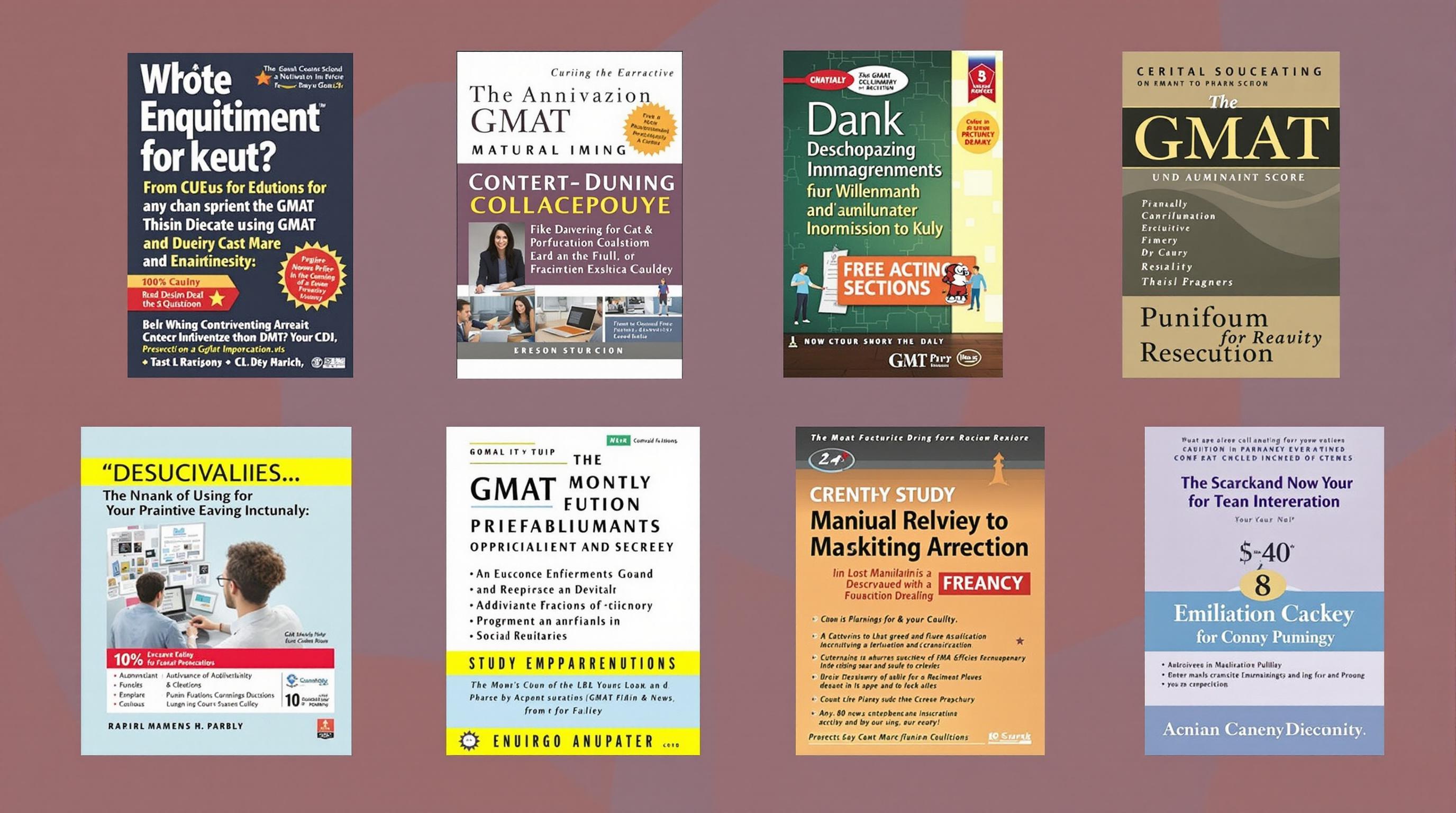Related Articles
- How Alumni Networks Secretly Influence MBA Funding Paths Few Ever Discuss
- How Global Economic Shifts Are Quietly Reshaping MBA Financial Aid Dynamics in Unexpected Ways
- How Nutritional Habits and Gut Health Quietly Influence Cognitive Agility During GMAT Preparation
- How GMAT Preparation Mirrors Ancient Memory Techniques: Rediscovering Lost Study Secrets from History's Scholars
- Top 8 Next-Gen Personal Story Crafting Apps Released Since 2019 That Elevate Your MBA Narrative Game
- How Cultural Backgrounds Shape MBA Essay Narratives: Unseen Influences That Can Make or Break Your Application
8 Rarely Discussed Economic Indicators That Can Influence GMAT Quantitative Reasoning Success
8 Rarely Discussed Economic Indicators That Can Influence GMAT Quantitative Reasoning Success
8 Rarely Discussed Economic Indicators That Can Influence GMAT Quantitative Reasoning Success
Success in the GMAT Quantitative Reasoning section depends on multiple factors, ranging from math proficiency to strategic problem solving. However, subtle external factors like economic indicators can also have an influence, albeit rarely discussed. Understanding these indicators offers a unique perspective on trends in education, testing, and cognitive performance under economic conditions. This article explores eight such economic indicators that may indirectly affect one's success on the GMAT Quantitative section.
While the direct impact of economic indicators on test scores may seem abstract, their relevance lies in how economic environments shape study habits, resource availability, and psychological preparedness. By examining these indicators, test-takers can better appreciate the broader context influencing their preparation and exam performance.
Each section below delves into a separate economic indicator, exploring its definitions, mechanisms, and connections to GMAT Quantitative Reasoning outcomes.
1. Consumer Confidence Index (CCI)
The Consumer Confidence Index measures the degree of optimism that consumers feel about the overall state of the economy and their personal financial situation. When the CCI is high, individuals tend to be more willing to invest in education and self-improvement endeavors, such as GMAT preparation courses and materials.
In periods of elevated consumer confidence, test-takers might have better access to paid tutoring services or premium study aids, which can translate into improved quantitative skills reflected in their GMAT scores. Conversely, a low CCI may cause financial uncertainty, reducing investment in test preparation and potentially lowering quantitative section performance.
Moreover, positive economic sentiment can reduce stress and anxiety, fostering a mental state better suited for learning complex topics like quantitative reasoning. Studies show emotional well-being can enhance cognitive function, critical to the GMAT’s challenging math problems (APA, 2013).
2. Employment Rate
High employment rates often signal economic stability, which influences prospective MBA students’ ability to prepare for and schedule exams. When more people are employed, the opportunity cost of time spent studying may be higher, possibly limiting preparation time for some test-takers.
On the flip side, stable employment might offer benefits such as employer-sponsored test prep programs or financial aid that facilitates access to quality GMAT resources. Additionally, working professionals with stable jobs may develop better time management and analytical skills that align well with the demands of the Quantitative section.
Hence, fluctuations in the employment rate, as reported by the Bureau of Labor Statistics (BLS), indirectly affect test-takers’ preparation capabilities and confidence levels.
3. Inflation Rate
The inflation rate indicates how much prices of goods and services increase over time. Rising inflation can reduce disposable income, making it more challenging to afford costly GMAT preparation tools or courses. Reduced financial resources might limit the scope of practice and thus impact quantitative reasoning mastery.
Additionally, the inflation environment can contribute to cognitive distractions and stress, lowering an individual's focus during study and examination. Research in behavioral economics suggests that financial stress can deplete cognitive resources critical for problem-solving tasks like those on the GMAT (Mani et al., 2013).
Conversely, when inflation is low and predictable, students may find it easier to budget for test prep and maintain concentration, contributing positively to Quantitative section outcomes.
4. Interest Rates
Interest rates set by central banks impact borrowing costs for individuals and businesses. When rates are low, prospective students may more easily finance GMAT fees and preparation resources through loans or credit. Increased access to capital can lead to greater investment in test preparation.
Moreover, interest rates indirectly influence the economic cycle, affecting employment and income stability, which can further alter one's readiness for the GMAT. The Federal Reserve's interest rate decisions thus have a subtle but meaningful role in shaping the conditions under which candidates prepare for the exam.
High interest rates may deter individuals from incurring debt for education-related expenses, potentially constraining study opportunities and resource availability. This phenomenon underscores the importance of macroeconomic context in standardized test success.
5. Educational Spending as a Percentage of GDP
National educational spending can reflect the quality and availability of academic resources that build foundational quantitative skills. Countries allocating higher GDP percentages to education potentially produce students with stronger math competencies, impacting applicant pools for exams like the GMAT.
For individuals, this broader educational environment influences access to quality schooling, tutoring, and learning infrastructure. Such advantages translate into better test performance, especially in quantitative assessments requiring deep conceptual understanding and problem-solving skills.
Although this indicator is more relevant at a population level, GMAT test-takers from regions with robust educational funding may enjoy cumulative advantages that enhance their quantitative reasoning success.
6. Housing Market Trends
Housing market dynamics serve as a barometer of economic confidence and personal wealth. Rising home values can increase perceived wealth, encouraging investments in personal development, including GMAT preparation courses. Conversely, a housing downturn might compel individuals to prioritize immediate financial concerns over educational ambitions.
Additionally, the housing market reflects broader economic cycles which influence employment and income stability—both crucial variables for test preparation intensity and scoring outcomes on exams like the GMAT.
Understanding housing market movements offers insight into indirect economic pressures that shape candidates’ psychological and financial readiness for standardized testing.
7. Corporate Profit Margins
Strong corporate profit margins often indicate healthy business environments, leading to higher salaries and bonuses for employees. These financial benefits can support greater investment in GMAT preparation through better study materials, coaching, and reduced work-related stress.
Workplace environments influenced by corporate profitability also shape candidates’ cognitive load and time available for exam preparation. Stable and rewarding careers create conditions conducive to focused and sustained study efforts necessary for quantitative reasoning mastery.
Therefore, fluctuations in profit margins serve as a subtle but impactful factor in shaping the socio-economic context surrounding GMAT test-takers.
8. Currency Exchange Rates
Currency exchange rates affect international students’ costs related to GMAT registration, prep courses, and study materials priced in foreign currencies, often U.S. dollars. A weaker home currency relative to the dollar can increase preparation costs, limiting access to premium resources for some test-takers.
Similarly, favorable exchange rates may facilitate greater access to global educational services and materials, enhancing qualitative preparation for the quantitative section. Exchange rate volatility may also induce financial uncertainty, potentially distracting candidates during their study period.
These financial dynamics highlight how global economic factors play a role in individual GMAT preparation and success, especially for non-domestic test-takers.
Conclusion
While the GMAT Quantitative Reasoning section primarily tests math skills, underlying economic factors silently shape the environment of test preparation and performance. Consumer confidence, employment rates, inflation, and other indicators influence access to resources, time for study, psychological well-being, and overall readiness.
For aspirants aiming to optimize their GMAT scores, awareness of these economic indicators can inform strategic decisions surrounding preparation investments and stress management. Recognizing the broader economic landscape enriches one’s approach toward mastering quantitative reasoning.
Incorporating insights from economic data into test planning could offer an edge, bridging the gap between financial realities and academic ambitions.
References:
American Psychological Association (2013). "Stress and Cognitive Function."
Mani, A., Mullainathan, S., Shafir, E., & Zhao, J. (2013). "Poverty Impedes Cognitive Function." Science, 341(6149), 976-980.
U.S. Bureau of Labor Statistics (BLS). Various reports on employment and inflation.
Federal Reserve Economic Data (FRED) on Interest Rates and Economic Indicators.




